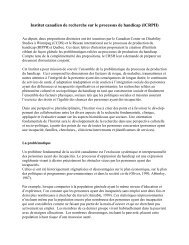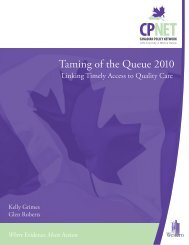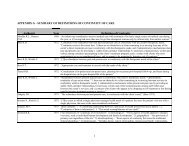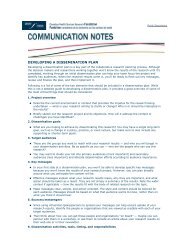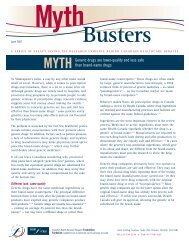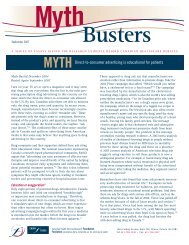Full Report
Full Report
Full Report
Create successful ePaper yourself
Turn your PDF publications into a flip-book with our unique Google optimized e-Paper software.
RENAL<br />
are increasing in NWT. Care providers are able to look at<br />
patients’ test results, assess their condition, determine<br />
the care they should receive and make appropriate<br />
referrals if specialist care is needed.<br />
The value of early interventions<br />
Staff within the communities noted that the<br />
guidelines and referral process were useful in caring<br />
for patients. One nurse used the CPGs to check<br />
patients’ blood work. Results of interest prompted<br />
the nurse to check the guidelines, ensure the patient<br />
was receiving the necessary care and arrange for any<br />
incomplete follow-up work to be done. Considering<br />
an average of 30% of people with advanced kidney<br />
disease are referred late to nephrology services,<br />
every effort to identify patients early and prevent the<br />
progress of renal disease is clearly valuable. 86 In Fort<br />
Simpson, the clinical manager prioritized the CPGs<br />
and referral process by posting them directly across<br />
from the nurse’s front desk. Many staff noted that the<br />
ability to easily see and reference the tools helped<br />
keep them front of mind.<br />
Many staff have expressed interest in<br />
spreading the use of these tools to other<br />
chronic disease areas.<br />
Overall, practitioners throughout NWT have been<br />
quick to adopt the CPGs and referral process. Many<br />
have expressed interest in spreading the use of these<br />
tools to other chronic disease areas. “I would love<br />
for this to be happening for cardiology,” noted one<br />
of the original CPG reviewers. “Many of our medivac<br />
dollars are spent on acute coronary syndrome and<br />
it is our number one reason for medivac in the NWT.<br />
Our medical travel budget is 48% of what the hospital<br />
spends on everything, so cardiology is a hugely<br />
underserved population.”<br />
Technological challenges<br />
A territorial initiative is currently underway to deploy<br />
a territory-wide EMR system by 2017. Using the WOLF<br />
EMR system, this initiative will give care providers<br />
secure access to patients’ lab, diagnostic imaging and<br />
other medical records. 87, 88 At the time of the renal pilot<br />
projects, two separate, stand-alone WOLF EMR systems<br />
were in use in the only NWT communities that run<br />
RIC clinics: Yellowknife and Hay River. It was known<br />
to the improvement team that the WOLF systems in<br />
these two communities did not interface, however<br />
they had not anticipated the impact of this barrier in<br />
effectively using the EMR tool to centralize renal care<br />
management for the patients at the two sites. The need<br />
to create duplicate patient records on Yellowknife’s<br />
EMR, the pursuant data sharing challenges, and the<br />
significant workload associated with this manual data<br />
entry, made the use of the EMR for non-Yellowknife<br />
clients unfeasible.<br />
The pilot also faced challenges related to staff capacity<br />
to manage the influx of referrals and data entry into<br />
the system. Manual entry of information for non-<br />
Yellowknife clients required a significant amount of<br />
time from frontline staff. At the time of the pilots, no<br />
staff involved in the project had the capacity to take<br />
on the additional work of populating and maintaining<br />
the database. Therefore, in June 2012, the Department<br />
agreed to change the scope of the project to include<br />
only Yellowknife RIC clients and new referrals in the<br />
pilot project database until additional project support<br />
to manually enter and maintain new clients could be<br />
established. As a result, Hay River moved away from<br />
having its RIC staff participate directly in the database<br />
maintenance. Although Hay River staff still remained<br />
part of the pilot projects, their overall participation was<br />
diminished. As a result, some staff felt less informed<br />
about the overall progress and direction of the project.<br />
Making the Case for Change<br />
42




